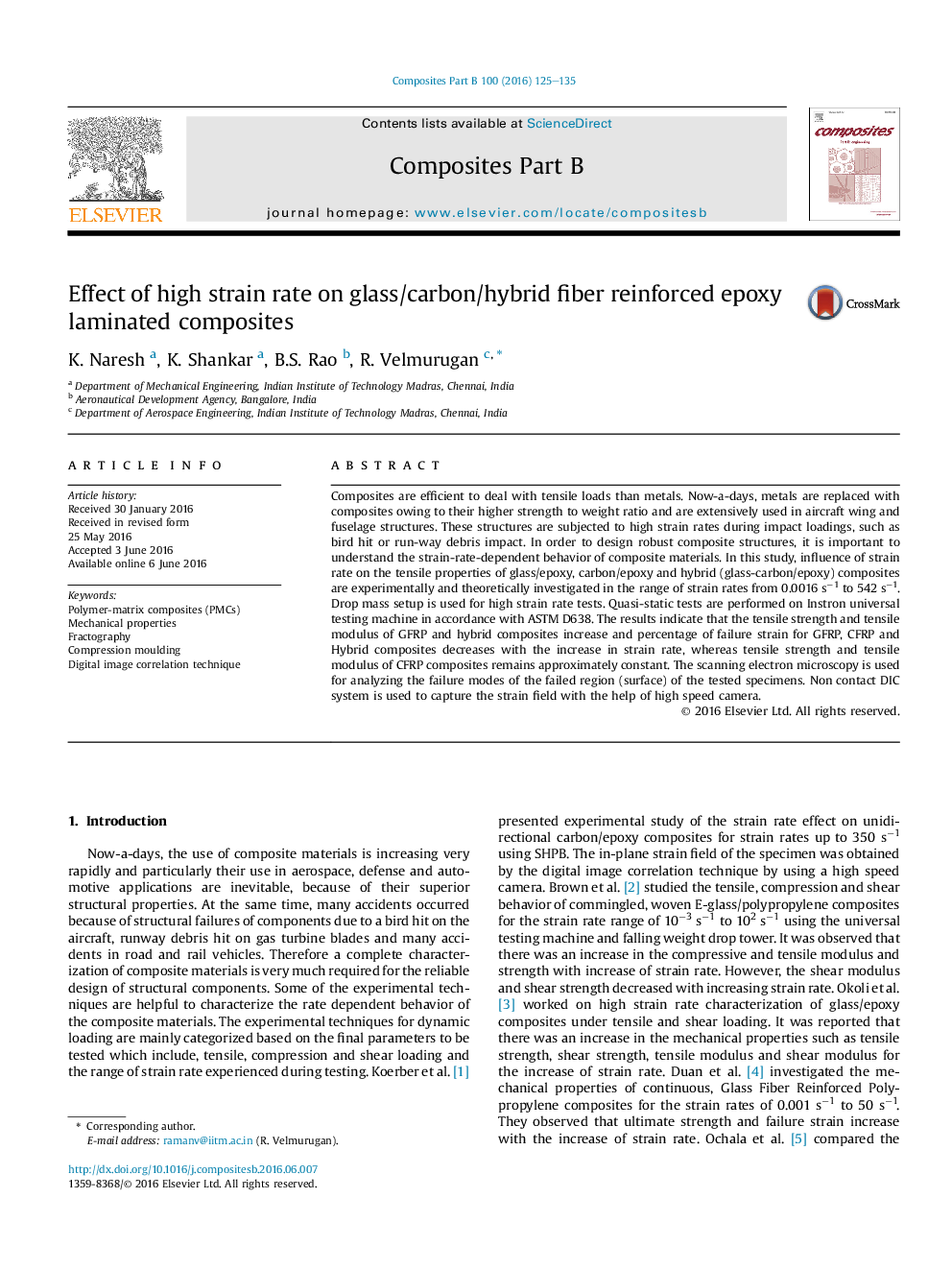| Article ID | Journal | Published Year | Pages | File Type |
|---|---|---|---|---|
| 816783 | Composites Part B: Engineering | 2016 | 11 Pages |
Composites are efficient to deal with tensile loads than metals. Now-a-days, metals are replaced with composites owing to their higher strength to weight ratio and are extensively used in aircraft wing and fuselage structures. These structures are subjected to high strain rates during impact loadings, such as bird hit or run-way debris impact. In order to design robust composite structures, it is important to understand the strain-rate-dependent behavior of composite materials. In this study, influence of strain rate on the tensile properties of glass/epoxy, carbon/epoxy and hybrid (glass-carbon/epoxy) composites are experimentally and theoretically investigated in the range of strain rates from 0.0016 s−1 to 542 s−1. Drop mass setup is used for high strain rate tests. Quasi-static tests are performed on Instron universal testing machine in accordance with ASTM D638. The results indicate that the tensile strength and tensile modulus of GFRP and hybrid composites increase and percentage of failure strain for GFRP, CFRP and Hybrid composites decreases with the increase in strain rate, whereas tensile strength and tensile modulus of CFRP composites remains approximately constant. The scanning electron microscopy is used for analyzing the failure modes of the failed region (surface) of the tested specimens. Non contact DIC system is used to capture the strain field with the help of high speed camera.
